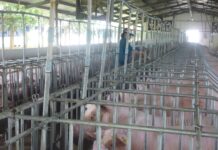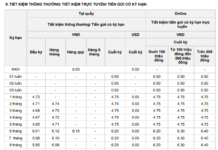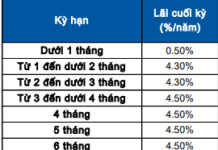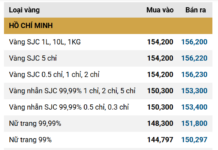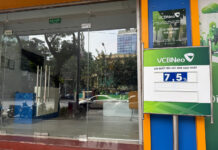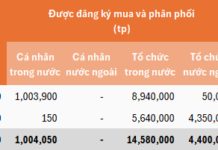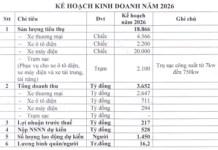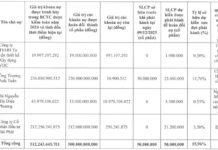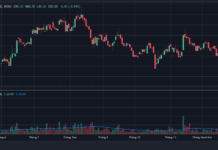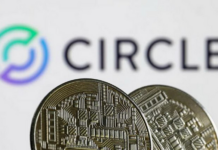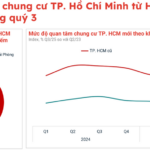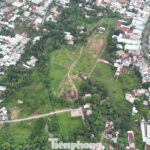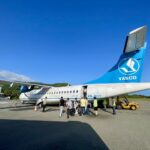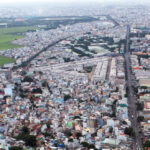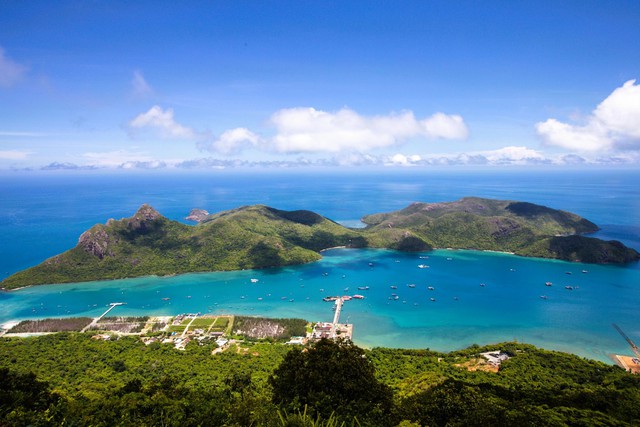
The People’s Committee of Ho Chi Minh City has recently approved the Comprehensive Adjustment Plan for the General Construction Planning of Con Dao Island until 2045. This plan aims to synchronize technical and social infrastructure development, positioning Con Dao as a leading national and international eco-tourism and cultural-historical hub.
According to the Ho Chi Minh City People’s Committee, this planning will serve as a foundation for the city to prioritize investments, focusing on key infrastructure projects. These initiatives will not only drive the development of Con Dao but also align with the regional growth strategy of Ho Chi Minh City.
Notably, the new plan includes two land reclamation projects: the Southeast Suoi Ot and Co Ong Area and the Central Con Dao Land Reclamation Area.
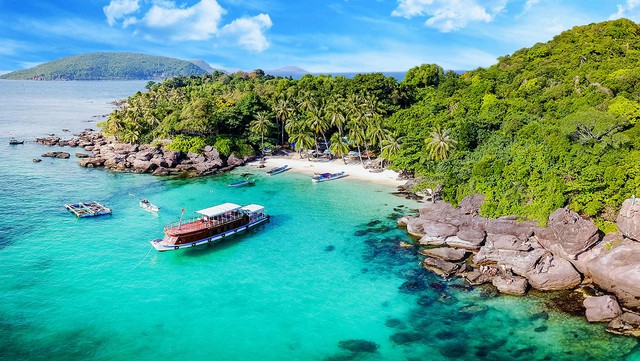
The new planning features two land reclamation projects: the Southeast Suoi Ot and Co Ong Area, and the Central Con Dao Land Reclamation Area.
The Ho Chi Minh City Department of Planning and Architecture, responsible for the planning, has outlined a total of 76 investment projects to be implemented in two phases: 2025–2030 and post-2030. During the 2025–2030 phase, the city plans to execute 73 projects with a total investment of over 21.3 trillion VND, while the remaining 3 projects will be carried out after 2030.
The budget allocation, exceeding 21.6 trillion VND, will prioritize technical and social infrastructure. Additionally, the city has listed 21 public-private partnership (PPP) projects to mobilize social resources for critical infrastructure development.
Among the 25 technical infrastructure projects, key initiatives include upgrading Con Dao Airport, expanding Ben Dam Port, constructing an international cruise terminal at Con Dao Passenger Port, installing 8 diesel generators at An Hoi Power Plant, and developing water reservoirs and supply systems.
The 28 social infrastructure projects are designed to foster community development, with highlights such as the restoration of Hang Keo Cemetery, the expansion and digitization of Con Dao Museum and historical sites, the enhancement of Hang Duong Cemetery’s cultural area, the construction of the Con Dao Special Administrative Center, and the development of social housing for residents and officials on the island.
Furthermore, Ho Chi Minh City will seek investment for 21 PPP projects with a total non-budget capital of up to 44.555 trillion VND. These projects focus on framework technical infrastructure, tourism, and urban service development. Notable large-scale projects include a mixed-use residential and service area in central Con Dao (31.4 ha), a tourism complex with housing and golf course in Co Ong, a marina and tourism urban area at Ben Dam, and more.
The planning also prioritizes administrative, educational, healthcare, and public urban projects, such as the Con Dao Special Administrative Center, Secondary School in Residential Area No. 3, Tuoi Tho Kindergarten Branch, the renovation of Ton Duc Thang coastal space, the enhancement of Le Duan-Nguyen An Ninh landscape architecture, and the upgrade of Nguyen Van Linh Road.
The city emphasizes tourism service development, framework technical infrastructure projects, and key facilities to enhance urban and rural residential areas, attract tourists, and promote socio-economic growth while protecting natural resources.
The plan specifically highlights the development of underwater entertainment areas at Ben Dam, Con Dao Passenger Port, and locations near seaside hotels. Investments in these areas must comply with approved national sector plans and specialized technical regulations.
Investors in underwater entertainment projects must adhere to legal requirements for investment and construction.
As of July 1st, the new Ho Chi Minh City was formed by merging the former Ho Chi Minh City, Binh Duong, and Ba Ria – Vung Tau. Post-merger, the city’s position as the nation’s economic leader is reinforced, with a consolidated Gross Regional Domestic Product (GRDP) surpassing 2.7 quadrillion VND, accounting for approximately 25% of the national GDP.
With this scale, the new Ho Chi Minh City maintains its top economic position nationwide, serving as Vietnam’s primary growth engine.
By 2024, the new Ho Chi Minh City has established an industrial hub (encompassing extraction, processing, manufacturing, and construction) valued at nearly 930 trillion VND, contributing over 25.52% to the national industrial value. According to the 2050 vision plan, the city will host 105 export processing zones and industrial parks, covering a total planned area of over 49,000 hectares, solidifying its status as the nation’s leading industrial center.
Clash of Titans: Unveiling the Fascinating Flow of Year-End Capital in Vietnam’s Two Largest Apartment Markets
Vietnam’s real estate market is witnessing a significant capital shift between its two largest economic hubs: Hanoi and Ho Chi Minh City. While the apartment segment in the capital continues to maintain impressive growth, many Hanoi investors are increasingly turning their attention to Ho Chi Minh City, drawn by its high profit potential.
Hanoi Unveils 300 Trillion VND Red River Scenic Super Boulevard, Rallying Industry Titans Deo Ca, Van Phu Invest, MIK Group, and VPBank to Forge a Landmark Transformation
The Steering Committee, led by the Vice Chairman of Hanoi People’s Committee, oversees the implementation of tasks related to architectural planning and the development of the Red River Landscape Avenue investment project. With an estimated total investment of 300 trillion VND, this ambitious initiative involves the participation of several major industry leaders.
Abandoned Prime Land in the Heart of Ho Chi Minh City: An Aerial Perspective
Nestled in the heart of Thu Dau Mot Ward, Ho Chi Minh City, this 24-hectare prime development site is strategically positioned at the crossroads of four major thoroughfares: Binh Duong Avenue (National Highway 13), Yersin Street, Thich Quang Duc Street, and Duong Vo Thanh Long Street. Surrounded by a bustling urban landscape, the area boasts unparalleled accessibility and a wealth of amenities, making it an ideal location for both residential and commercial ventures.
Unlocking Land Allocation Challenges for Public Projects in Urban Developments
HoREA advocates for resolving land allocation challenges in commercial housing projects and urban areas to facilitate the development of healthcare and educational facilities. This initiative aims to safeguard residents’ interests and promote the synchronized growth of social infrastructure.


